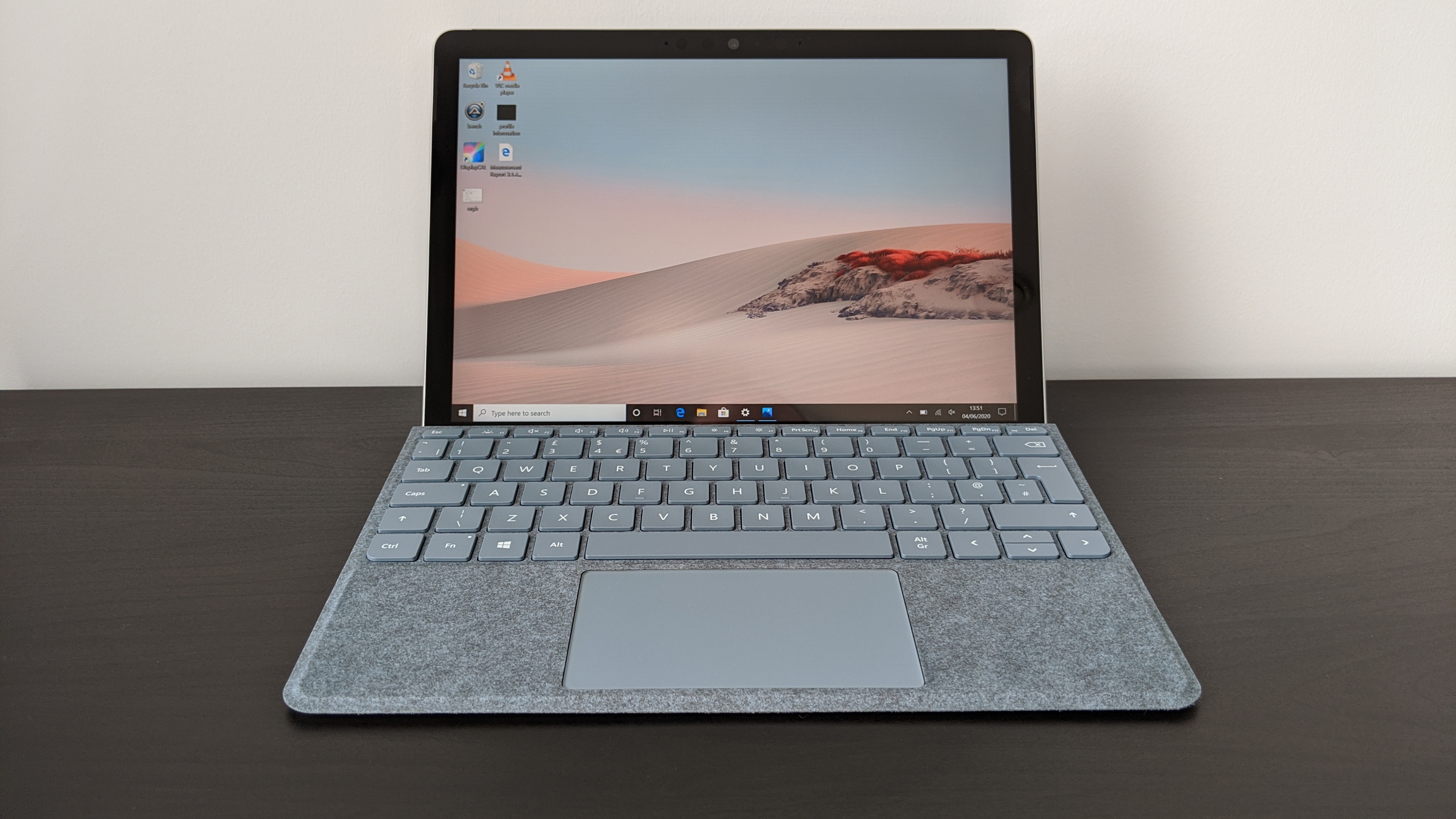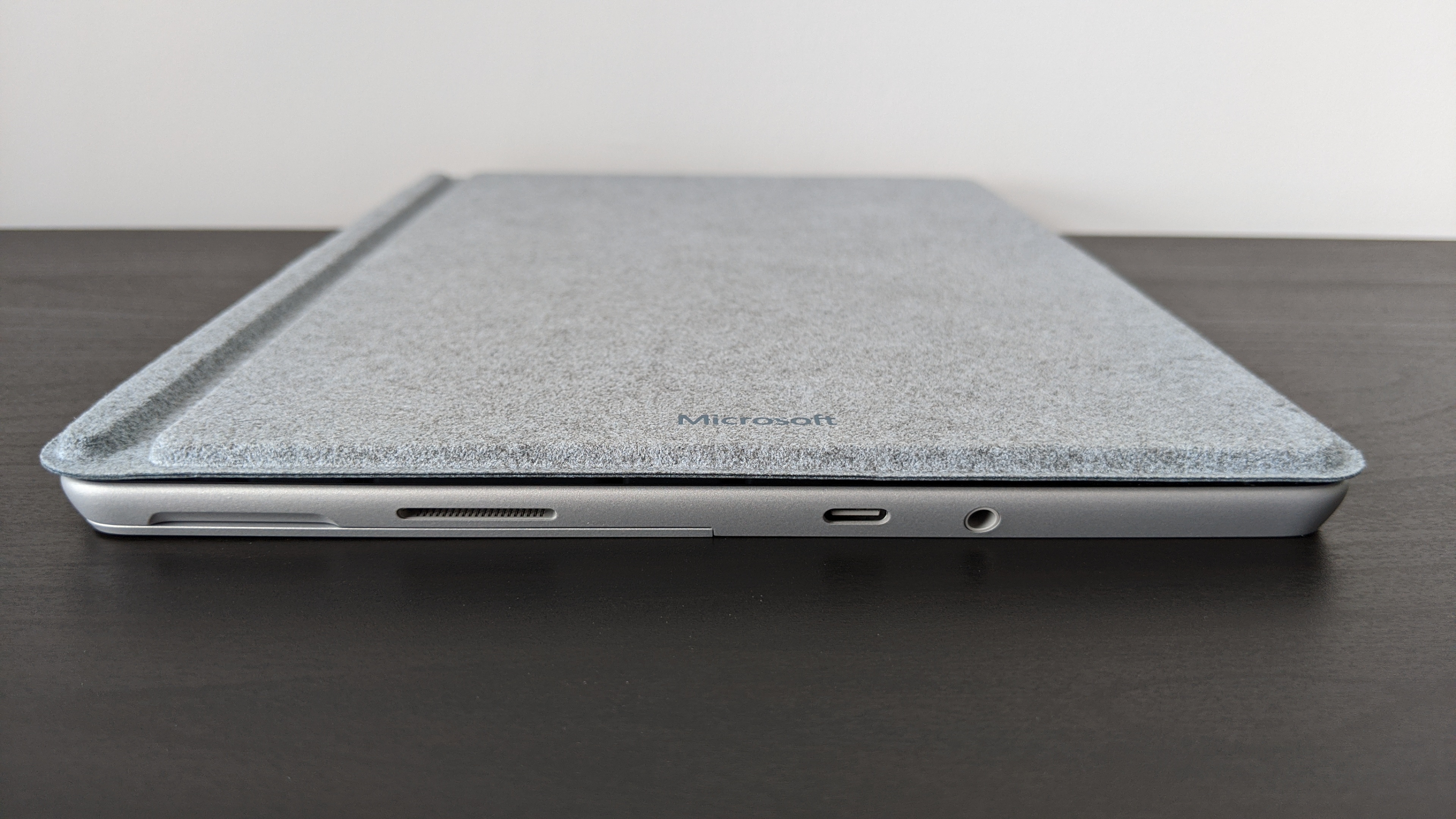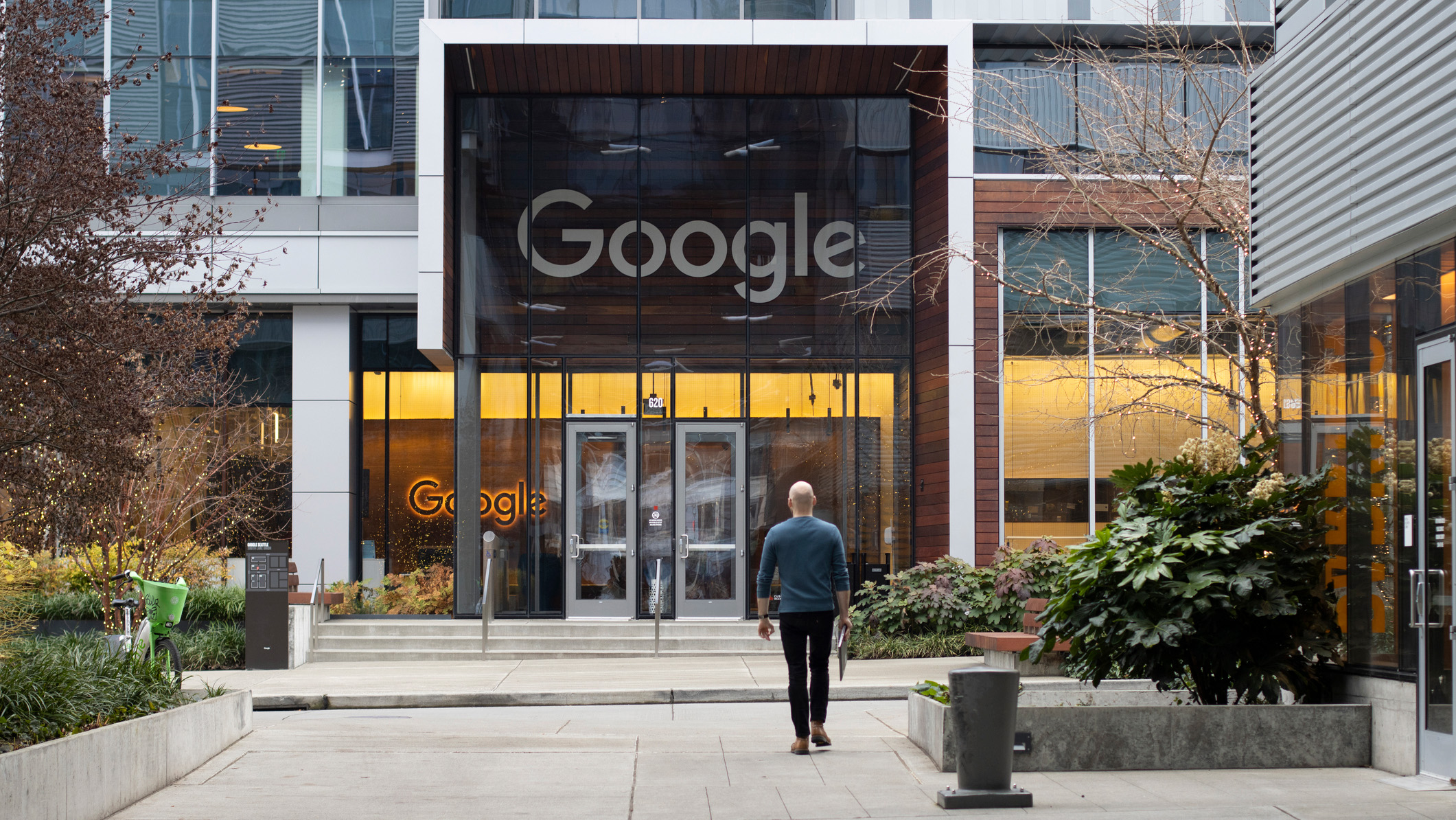Microsoft Surface Go 2 review: Same size, bigger ambition
Microsoft’s new budget 2-in-1 is a refined and beautifully portable success
-
+
Great design and display
-
+
Improved battery life
-
+
Cheap for a Surface
-
-
Not very powerful









Microsoft’s latest hardware launch is a story of extremes: at one end is the cash-burning Surface Laptop 3, a bonafide desktop replacement with dedicated graphics options, and at the other sits the Surface Go 2, a petite and affordable 2-in-1.
Nothing has changed from the original Surface Go in terms of mission statement. The Go 2 is, once again, an attempt to capture the essence of the main Surface Pro line in a cheaper, more portable package. A host of small improvements, however, end up ensuring that this is a significantly better hybrid than the Surface Go even as it keeps many aspects the same.
Microsoft Surface Go 2 review: Design
A perfect example of this is the chassis. At 245 x 175 x 8.3mm, the Surface Go 2 is exactly the same size as its predecessor, but Microsoft has slimmed the bezels, making for a sleeker look while allowing for the display size to rise from 10in to 10.5in.
Not that anything was particularly wrong with the old model’s design; it exhibited all of the wider Surface family’s excellent build quality standards, and the same is true here. From the sturdy magnesium alloy chassis to the fully adjustable kickstand, the Surface Go 2 very much resembles a Surface Pro 7 - only smaller.
On that note, portability is beyond reproach. Budget 2-in-1s can end up a bit chunky and unrefined, but the Surface Go 2 is thinner, lighter - only 745g with the keyboard attached - and more compact than even the most svelte ultraportable laptops. And, if you have a Surface Pen stylus, it can magnetically snap onto the left edge - again, just like on a Surface Pro - rather than be left loose in a bag.
Microsoft Surface Go 2 review: Keyboard and trackpad

A benefit of keeping the old Surface Go’s dimensions is that its Type Covers will work here as well, so there’s no need to buy a new model if you’re directly upgrading. That said, the Type Cover is - in typical Surface fashion - an optional extra that doesn’t feel remotely optional or like an extra, so be sure to factor in an extra £83 exc VAT for a standard keyboard attachment or £104 exc VAT for the version covered in hydrophobic Alcantara fabric.
The better news is that the Go’s Type Cover is as lovely to use as ever. You might have to get used to the small scaling - the key sizes brought back memories of using netbooks - but they’re still spaced well enough to prevent mashed-up typos, and Microsoft has still found room for old comforts like a double-height Enter key and a full set of function keys.
There’s a nice, crisp, distinct action to each keypress; there’s no rubbery switches or overly shallow travel here. The trackpad is great too; it’s decently sized, all things considered, and the smooth finish makes swipes and touch gestures a breeze.
Microsoft Surface Go 2 review: Display
Most improvements on the Surface Go formula have been focused on the Surface Go 2’s screen. Besides the IPS panel getting bigger, it also runs at a higher resolution: 1,920 x 1,280 to the Surface Go’s 1,800 x 1,200.
This all means Windows doesn’t feel as cramped as it did on the previous model, and everything looks sharp and legible without the need to fiddle with scale settings. Once again, the aspect ratio is 3:2, helpfully granting a bit of extra height for long documents and web pages.

Technically, too, this display performs very well indeed. Contrast is a high 1,318:1, peak brightness is a glare-busting 398cd/m2, and while its average delta-E of 1.53 is slightly higher than the Surface Go’s 1.44, that’s still great colour accuracy for a tablet. Besides, that difference is paltry compared to how the Surface Go 2’s 97.2% sRGB gamut coverage outperforms the Surface Go’s 90%.
Microsoft Surface Go 2 review: Specs and performance
This time, there’s a choice of specs available for the Surface Go 2. You can either have an Intel Pentium 4425Y with 4GB or 8GB of RAM or, as we received, a Core m3-8100Y with 8GB of RAM.
Low-power chips like these allow for fanless operation, which has its perks: the chassis can be slimmer and running is completely silent. Sadly, the one thing the Surface Go 2 doesn’t borrow from the Surface Pro series is performance. The Core m3-8100Y can muster up respectable single-core power but isn’t much of a multitasker, and we only recorded an overall score of 25 in our 4K application benchmarks. That’s a modest six point improvement on the original Surface Go, but we hoped for more from this upgraded processor.
Then again, as long as you stay away from workloads like video encoding or 3D modeling, the Surface Go 2 feels livelier than the numbers might suggest. It has no qualms at all with word processing and web apps, even if you’ve got a few different windows open at once.
The 128GB SSD within this Core m3-8100Y also posted a very quick sequential read speed of 1,281MB/s. Its write speed of 302MB/s was less exciting, but that’s still a good reason to move up past the base models, which only feature 64GB of eMMC storage.
As for battery life, the Surface Go 2’s 8hrs 26mins video test result doesn’t set any records, but it’s good enough for most purposes. And, notably, it’s an improvement on both the Surface Go’s 6hrs 23mins and the Surface Pro 7’s 7hrs 20mins.

Microsoft Surface Go 2 review: Ports and features
Conversely, the Surface Go 2’s physical connections are identical to those of the original: there’s one USB-C port and a headphone jack on the left edge, with a microSD card slot hidden beneath the kickstand.
This will feel limiting if you’re using a Surface Go 2 as your primary laptop, but with video output capabilities as well as data carrying, at least the USB-C port is versatile. Easily expandable storage is also a big plus if the internal SSD fills up quickly -- which, for many, we suspect it will.
In terms of security and business features, there is an LTE version of the Core m3 spec available for £599 exc VAT, but we were sent a Wi-Fi only model. What is included as standard is a front-facing camera with Windows Hello support. As a webcam it’s surprisingly sharp, and Hello’s facial recognition works immaculately: it’s quick to set up and always unlocked the Surface Go 2 immediately upon finding a face match.
Dual far-field microphones, another new addition, also pick up speech with seriously impressive clarity. This is easily one of the best 2-in-1s for video conferencing, which for obvious reasons has become vastly more popular.
Yet another upgrade on the Surface Go is support for 802.11ax, or Wi-Fi 6. You’ll need a Wi-Fi 6 router to get the full benefit, but should your wireless infrastructure be updated as such, you can expect much faster uploads and downloads on the Surface Go 2.

Microsoft Surface Go 2 review: Verdict
Even if it’s no powerhouse, the Surface Go 2 sets a new standard for cheap Windows 2-in-1s. By tweaking and improving the already-accomplished Surface Go, without unduly jacking up the price, it’s even more successful at replicating the qualities of recent Surface Pro devices - even outdoing the current-gen Surface Pro 7 on battery life.
The small size and lack of multithreading muscle might put off power users, but this was never meant to be the kind of machine you’d use at a desk for eight hours. It’s a portable slice of Windows utility that can go anywhere, and a brilliant one at that.
Get the ITPro daily newsletter
Sign up today and you will receive a free copy of our Future Focus 2025 report - the leading guidance on AI, cybersecurity and other IT challenges as per 700+ senior executives
-
 ‘Phishing kits are a force multiplier': Cheap cyber crime kits can be bought on the dark web for less than $25 – and experts warn it’s lowering the barrier of entry for amateur hackers
‘Phishing kits are a force multiplier': Cheap cyber crime kits can be bought on the dark web for less than $25 – and experts warn it’s lowering the barrier of entry for amateur hackersNews Research from NordVPN shows phishing kits are now widely available on the dark web and via messaging apps like Telegram, and are often selling for less than $25.
By Emma Woollacott Published
-
 Redis unveils new tools for developers working on AI applications
Redis unveils new tools for developers working on AI applicationsNews Redis has announced new tools aimed at making it easier for AI developers to build applications and optimize large language model (LLM) outputs.
By Ross Kelly Published
-
 Google layoffs continue with "hundreds" cut from Chrome, Android, and Pixel teams
Google layoffs continue with "hundreds" cut from Chrome, Android, and Pixel teamsNews The tech giant's efficiency drive enters a third year with devices teams the latest target
By Bobby Hellard Published